How 1 gun led police to those responsible for at least 5 homicides and dozens of shootings
Gionni Dews stood outside the Oakley IHOP, a cigarette in his hand and a Glock handgun tucked in his clothes.
It was a day after Thanksgiving in 2021 and he was on edge. Earlier, police say, he had hit a woman he worked with at the restaurant during an argument. Dews called a friend to pick him up and was waiting for him to arrive.
But his co-worker called a friend, too.
As Dews smoked his cigarette, a man got out of a car in the parking lot. Moments later, his co-worker stepped outside and pointed at Dews.
“That’s him,” she said.
The man pulled a gun and opened fire. Dews started to run and pulled out his Glock to fire back.
He spotted his friend pulling up in an SUV and made a break for it, firing his gun as he ran. A bullet struck his leg and he went down, but his friend ran to him, pulled him into the SUV and sped away.
As police chased the SUV on Interstate 71, officers noticed someone tossing a bag out of the SUV’s window near Wasson Way. When they went back later to retrieve it, they found the Glock inside.
Related gun violence article: 1 injured in shooting outside Oakley IHOP, police say
No one knew it at the time, but the discovery of Dews’ gun that night was the start of a sprawling investigation that would lead police and federal agents far beyond the violence that occurred in the IHOP parking lot.
In the weeks and months that followed, the investigation would reveal how seemingly random acts of gun violence are connected in ways most people never see. It showed how guns move through the city, how teens and young men can get them and how they are used.
And it showed how one violent act can lead to another and another, spreading like a contagion across the community.
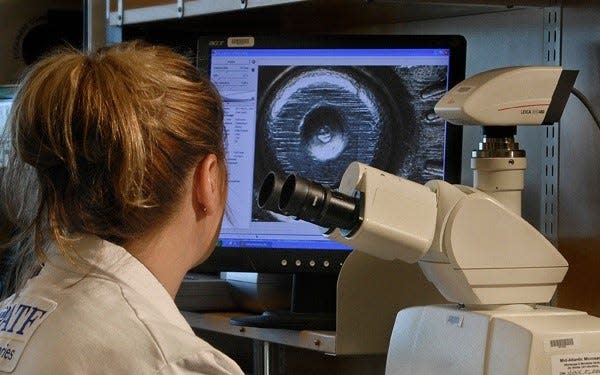
Using a combination of cutting-edge technology and old-fashioned police work, investigators from the Cincinnati Police Department and the Bureau of Alcohol, Tobacco, Firearms and Explosives tracked the violence the way epidemiologists track a plague: They analyzed data, identified suspects and mapped the connections they found.
Their investigation isn’t over, they say, but the group of teens in this case are responsible for at least five homicides and dozens of shootings.
None of it would have been possible without the work that began the night of the IHOP gunfight, with the discovery of a gun in a bag on the side of the road.
Crime Gun Intelligence Center connects firearms to crimes and offenders, in hopes of making Cincinnati safer
Within a day or so after the IHOP shooting, police took Dews’ gun to Cincinnati’s new Crime Gun Intelligence Center in Clifton. The center is in a two-story office building off Central Parkway, next to a small roadside motel and down the street from an abandoned Frisch’s restaurant.
From the outside, the place looks like it could be home to an accounting firm or a real estate company. But the investigative police work going on inside is as advanced as any in the region.
Dews’ gun was among about 100 guns that arrived at the center in November 2021, all of them recovered by police after shootings, drug busts or routine traffic stops. At the time, Cincinnati and other cities were struggling with a spike in gun crime that began during the COVID-19 pandemic and continues today.
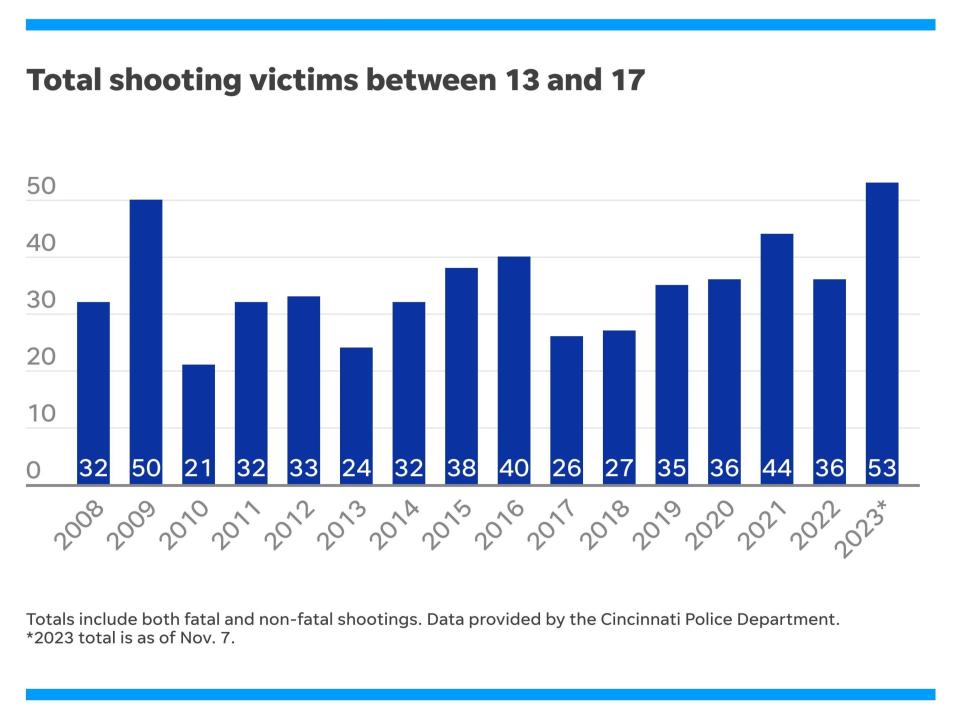
Even before the pandemic, police saw the violence coming. They were finding guns everywhere, far more than ever before.
A decade ago, it was a big deal for police to recover a gun from someone they’d arrested. It happened maybe once a week or so. By November 2021, when they found Dews’ gun on the side of the road, it was happening about three times a day.
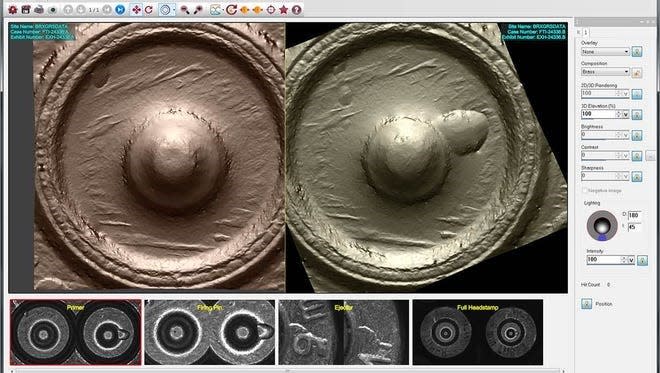
The Crime Gun Intelligence Center’s mission is to find out as much as it can about those guns. The hope is that by connecting guns to crimes and to the people who commit them, police can make Cincinnati’s streets safer.
As gun violence skyrocketed nationwide during the pandemic, the center was born in response. While homicides have fallen, violence among young people still rages. 2023 is on track to be the worst year on record for the number of teens shot.
When Dews’ gun arrived at the center, a team of police officers and ATF agents got to work. The team included ATF acting supervisor Derek Graham, Cincinnati Police Officer Thomas Chiappone and ATF special agent Will Crayner.
These men don't normally talk about their work to the press. Law enforcement worries that it could compromise their investigation. That's why police have been largely quiet about the connections between drive-by shootings and teen violence that have spiked in Cincinnati this year.
While there are things they could not speak about, they outlined how this new partnership between the ATF and Cincinnati police investigated this case.
They immediately put Dews’ gun through a battery of tests. They used cyanoacrylate fumes, known more commonly as super glue, to reveal fingerprints on the weapon, hoping to match any they found to suspects in other crimes.
They also fired the gun and took detailed scans of the back of the brass shell casings ejected by the gun. The casings, which surround the bullet, pick up microscopic markings when a gun is fired. Those markings are unique to the gun and allow police to connect multiple casings from multiple crime scenes to the same gun.
It’s similar to the way police use fingerprints to connect one suspect to more than one crime.
At the center, investigators entered the scans of the shell casings from Dews’ gun into a national database. If they got any hits, they’d know the gun had been used to commit other crimes.
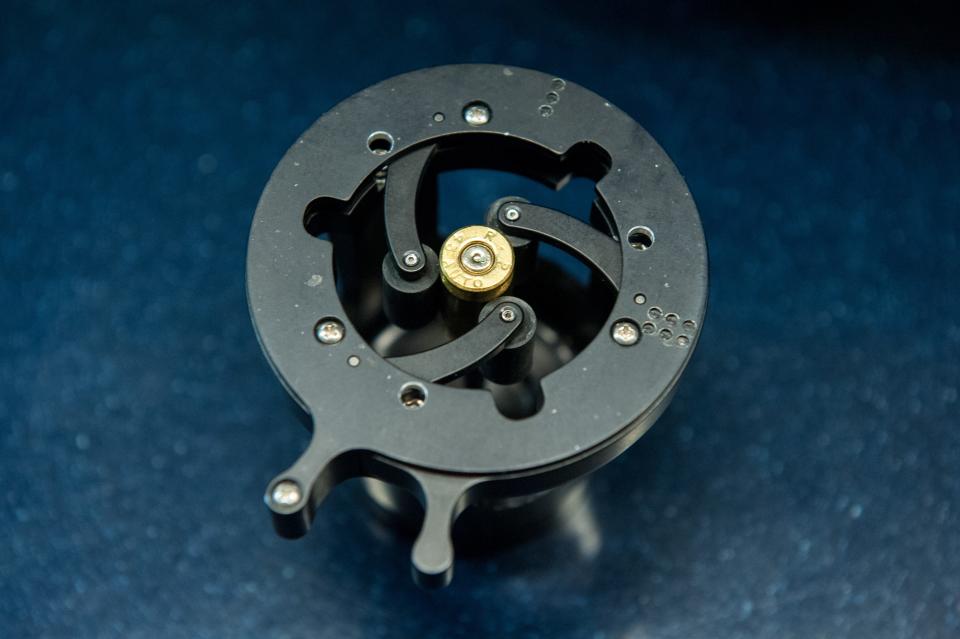
They came up empty. As far as they could tell, the IHOP parking lot around Thanksgiving was the first time that gun had been used in a shooting.
But they did find something else. The gun had been fitted with a “switch,” a device that makes the gun fully automatic. Switches are illegal under federal law because they essentially turn an otherwise legal gun into a machine gun capable of firing about 30 rounds in two seconds.
This got the attention of the team at the intelligence center. They’d already talked to Dews at the hospital because he was a gunshot victim. They didn’t charge him with a crime then, but now he could face federal charges for owning a gun with a switch.
They decided to bring him in.
Related gun violence article: Man who shot in self-defense gets prison for 3D-printed, full-auto 'switch' on his Glock
Westwood stakeout yields unexpected dividends
Knowing he could be armed, investigators staked out Dews' home in Westwood instead of rushing in to arrest him.
It was Dec. 1, less than a week after the IHOP shooting, and Dews was bedridden inside because of the gunshot wound. The officers outside didn’t know Dews was still recovering, so they sat outside watching, waiting for him.
Instead, they spotted three young men walk out with guns tucked in their waistbands. When the men got into a car, the police officers and agents followed.
After pulling the car over, they questioned Damien Baxter Jr., Elijah Fluellen and Jalmarionn Forte. All three were carrying Glocks.
Right away, the cops knew at least two of the men had likely committed a crime. That’s because it’s illegal in Ohio for anyone under 21 to possess a handgun; Fluellen was 21, Baxter was 19 and Forte just 17.
The investigators arrested all three and took their three Glocks back to the intelligence center, where they ran them through the same tests they’d run on Dews’ gun.
This time, they quickly linked two of the guns to other crimes. One of those crimes was the shooting death of a teen, Javier Randolph, in September.
More on Cincinnati teen shootings: Teen killed in Evanston was Western Hills student
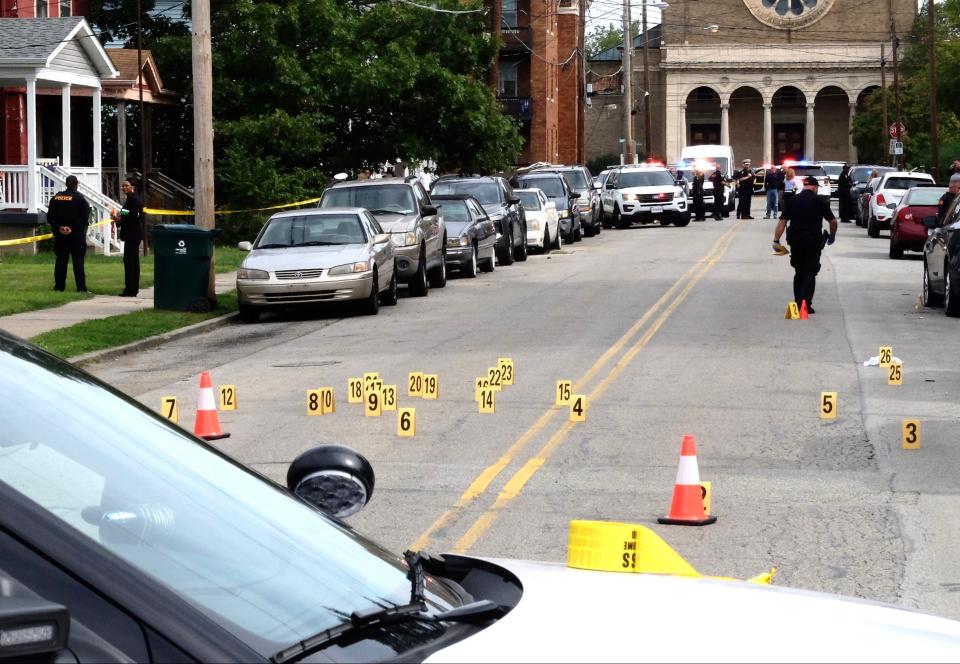
Javier, 16, had been walking in Evanston when a car with several people inside began following him. Soon, the passengers inside opened fire on him. Javier ran toward his mother’s house on Johnathan Avenue, but he only made it as far as her yard.
He died in his mother’s arms.
Dozens of shots were fired. Shell casings littered the street.
Police collected those casings and sent them to the intelligence center to be tested and uploaded to the national database. That’s how investigators were able to tie the gun seized in the Dec. 1 traffic stop to Javier’s death.
Investigators collect as many shell casings as they can. Even if no one is shot, if gunshots are heard, they go search. If the officers don't find anything, the ATF will send a dog to hunt down the shell casing by scent. Police can know if the same gun was used in two shootings even if they don't have that gun in their possession.
But they didn’t know whether Baxter, Fluellen or Forte were involved in Javier’s shooting or whether the gun had come into their possession after the shooting. Still, the gun was a solid lead.
Because of the shooting at the IHOP, police had now recovered four guns and connected them to multiple crimes, including a homicide.
They weren’t done yet.
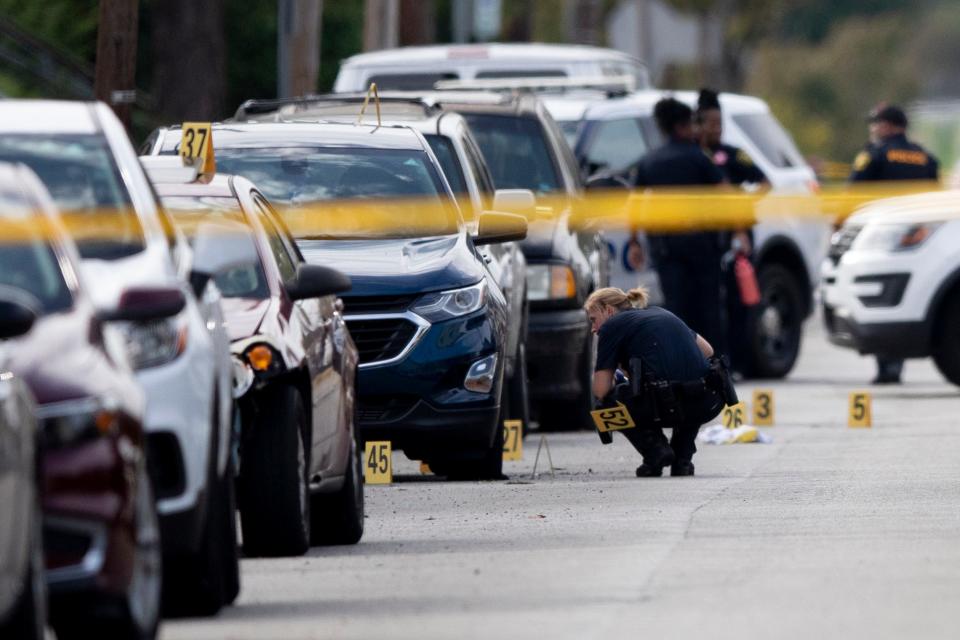
Illegal gun purchases are part of the chain
While police didn’t know who had shot Javier, they quickly zeroed in on Baxter. Their investigation revealed two of the guns recovered on Dec. 1 were illegally purchased for Baxter by someone else.
Days before the purchase, police say, Baxter had been texting a family friend, Antonio Jackson, demanding that he buy the guns for him.
Jackson, a 27-year-old music producer who worked with local rappers, had known Baxter for years. Police say he also knew about Baxter’s association with the Grape Street Gang, a group made up mostly of teens known for violence.
But Jackson had a problem. Because of a previous criminal charge, he couldn’t pass the background check required to buy a gun.
So police say he turned to a friend, Jonathan Gross, to make the purchase for him. They say Jackson and Gross, 34, went together to a local gun shop to buy the Glocks.
After buying the guns, Gross texted Baxter saying he had "it." Baxter replied with a smiley face emoji.
Whatever else would happen later with those guns, the purchases alone broke federal law because buyers aren’t allowed to buy guns for someone other than themselves. It’s known as a “straw purchase.”
As police tracked down the source of the guns, they were also searching Baxter’s phone, which they seized when they arrested him.
On that phone, they found a video of a kidnapping at gunpoint, which led them to yet another homicide.
More on gun violence in Cincinnati: Graphic details revealed of kidnapping that preceded three killings
Connection becomes clear after 16-year-old was shot, killed in College Hill
That homicide in September 2021 happened in College Hill about two months before the IHOP shooting.
The victim was Cornelius Foster Jr., better known as “Korn,” a 16-year-old aspiring rapper. He was shot on Ammon Avenue when someone opened fire into a crowd of people, killing him and wounding three others.
Many teens aspire to rap, but Korn stood out. Even the cops knew that if anyone was going to make it, Korn had the best chance. He had real talent.
But Korn wasn’t associated with Grape Street. He was associated with a rival gang, often called Exit 5.
Just five days after Korn was killed, a teen was listening to his music while walking through the West End neighborhood. Someone heard it and pulled the teen off the street and into an apartment at gunpoint.
There, his captors recorded him on a cell phone as they forced him to strip and dance while aiming a gun at his face. The kidnappers demanded that the teen say “f--- Korn” over and over again.
That’s the video police found on Baxter’s phone.
Investigators at the intelligence center won’t say how they did it, but they tied the video to three other teens: Roneal Reese, 19, Deandre Mills, 18, and Michael Madaris, 15. Police arrested all three, finding several guns in their cars and apartments.
It’s now late December 2021, about a month after the IHOP shooting, and the investigation now has led to more weapons and three more arrests, this time for kidnapping.
Reese and Mills would later go to prison for kidnapping the teen in the video.
The investigation of Madaris, however, led police far beyond the kidnapping.
'Hunting victims': At least 5 people killed by teen gangs last year
DNA provides some links to other Cincinnati homicide, shooting cases
Not long after police arrested Madaris, investigators matched his DNA to DNA found on a gun used in two homicides and three shootings.
Because the investigation is ongoing, police won’t say which cases are directly connected to that gun or to others found in his possession. But a grand jury indicted Madaris on charges of killing Javier and two other rival gang members: Avante Beatty, 18, and Yarsellay Sammie, 39.
Madaris is charged as an adult and faces a potential life sentence, though he was 15 at the time of the shootings.
While investigating Madaris, agents at the intelligence center used DNA testing, interviews, the shell casing database and other tools to identify another man they believe also was involved in Javier’s shooting: Dezeon Jones.
They say Jones, 20, possessed a gun used in the shooting. They connected the gun to the crime by matching it to a shell casing found at the scene.
Police say violence is not as random as it sometimes seems
The intelligence center’s work didn’t end there.
Almost two years after recovering the gun from the IHOP shooting in November 2021, federal agents and police are still tracking how that single gun is connected to acts of violence across the city.
To date, police say, they have identified suspects in dozens of shootings and five homicides based on the investigation that began in the IHOP parking lot.
They can’t talk about all of them at this time because investigations are ongoing, police say. But the team leading the investigation – Graham, Chiappone and Crayner – say the investigation reveals a larger truth about violence in the city: It’s not as random as it sometimes seems.
The violence attributed to Baxter and Madaris is just one example. The investigators said it was just one side of an ongoing fight. The death of Foster – the rapper known as Korn – inspired dozens of shootings and multiple homicides motivated by his death, police said.
They’re not done killing for Korn yet, Chiappone said.
But Graham, Chiappone and Crayner say their work isn’t over, either. The Crime Gun Intelligence Center is currently investigating other individuals and networks they’ve learned about because of the work that began two years ago.
They’ve connected people and crimes that previously seemed unrelated. They've found teens manufacturing dozens of Glock switches on 3D printers in their parents' basements – switches that sell for hundreds of dollars apiece on the streets and cost just cents to make.
Related gun violence article: What to know about 'Glock switches,' the devices that make handguns full auto
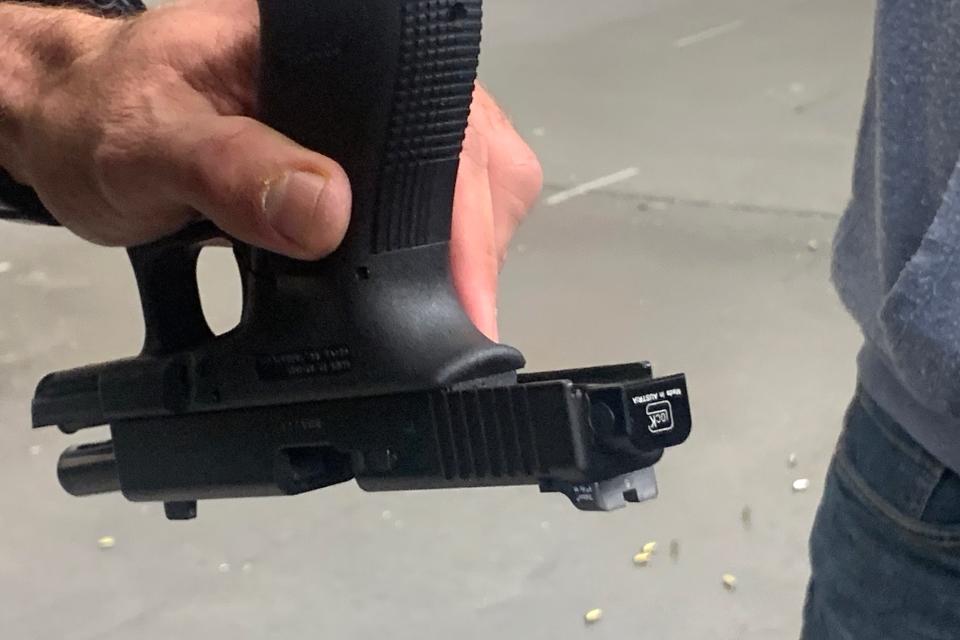
They've found crime scenes with scores of shell casings connecting up to a dozen guns to each other.
They say this new partnership and their dedication to collecting and cataloging as much evidence as possible is opening new doors to bring justice to families.
They’ve also gained a better understanding of the violence that plagues Cincinnati and how it spreads from person to person and neighborhood to neighborhood.
They said many of the teens they're arresting in connection with gun violence want to be "in the life" – a life that glorifies violence, money and the sense of belonging kids get from committing crimes and joining gangs.
In many cases, Chiappone said, those teens didn’t learn about robberies and shootings from movies or video games. He said they learned it from parents and siblings who are living the same kind of lives.
The result, he said, is a fatalism that's hard to escape. They said many of the teens they encounter believe their lives will end in gunfire or prison. In their world, a 20-year-old is an "old head" because they don't expect to live that long.
The IHOP shooting two years ago is a product of that mindset: Soon after an argument, the guns came out. And the investigators say they’ll keep following the trail of violence that case revealed, wherever it leads.
“This isn’t what started it. This isn’t what ended it," Crayner said of the IHOP shooting.
"Eventually, we’ll find more.”
Kids Who Kill: More teens are facing murder charges. How it came to this
Where are they now? A look at the group linked to killings, shootings in Greater Cincinnati
Michael Madaris is charged with multiple counts of murder, kidnapping, abduction, felonious assault and additional charges. His trial is still pending.
Deandre Mills was sentenced to six years in prison for his role in the West End kidnapping. Roneal Reese was sentenced to nine years in the kidnapping and for vandalizing Cornelius Foster Jr.’s grave. Police said he urinated and stomped on the teen’s grave.
Police also looked into Damien Baxter’s sister, Joni Travis, who they tracked down in Lexington, Kentucky. Their investigation showed she was the catalyst of and directly involved in the murder of Foster, also known as Korn. How they made that connection is one of those things they can't talk about. Travis was 18 when Foster was killed. Prosecutors said she shot him and three other juveniles when she opened fire on Ammon Avenue that night in September 2021. She is currently awaiting trial.
As for the trio picked up outside Gionni Dews’ apartment, Jalmarionn Forte and Elijiah Fluellen faced weapons charges. Forte was sent to juvenile detention and was released in 2022. Fluellen’s charges were dismissed.
Damien Baxter. the third member of the trio, was convicted on a state weapons charge in February but also faces federal gun trafficking charges along with Antonio Jackson and Jonathan Gross. All three pleaded to the federal charges. Baxter was sentenced to two years in prison. Gross is scheduled to be sentenced Nov. 16. Jackson is scheduled for sentencing in February.
Gionni Dews, the IHOP employee whose gun began all this, was convicted on federal weapons charges. Prosecutors said he did fire his weapon in self-defense, but that it was still illegal to possess the Glock modified to fire fully automatic. He was sentenced to three years in prison.
This article originally appeared on Cincinnati Enquirer: Investigation links group to 5 killings, dozens of shootings in Ohio

